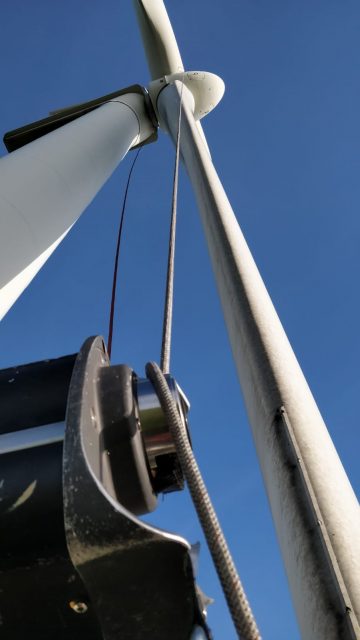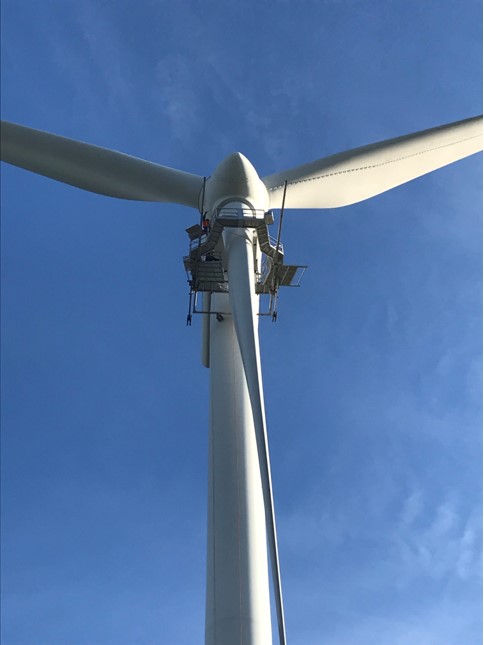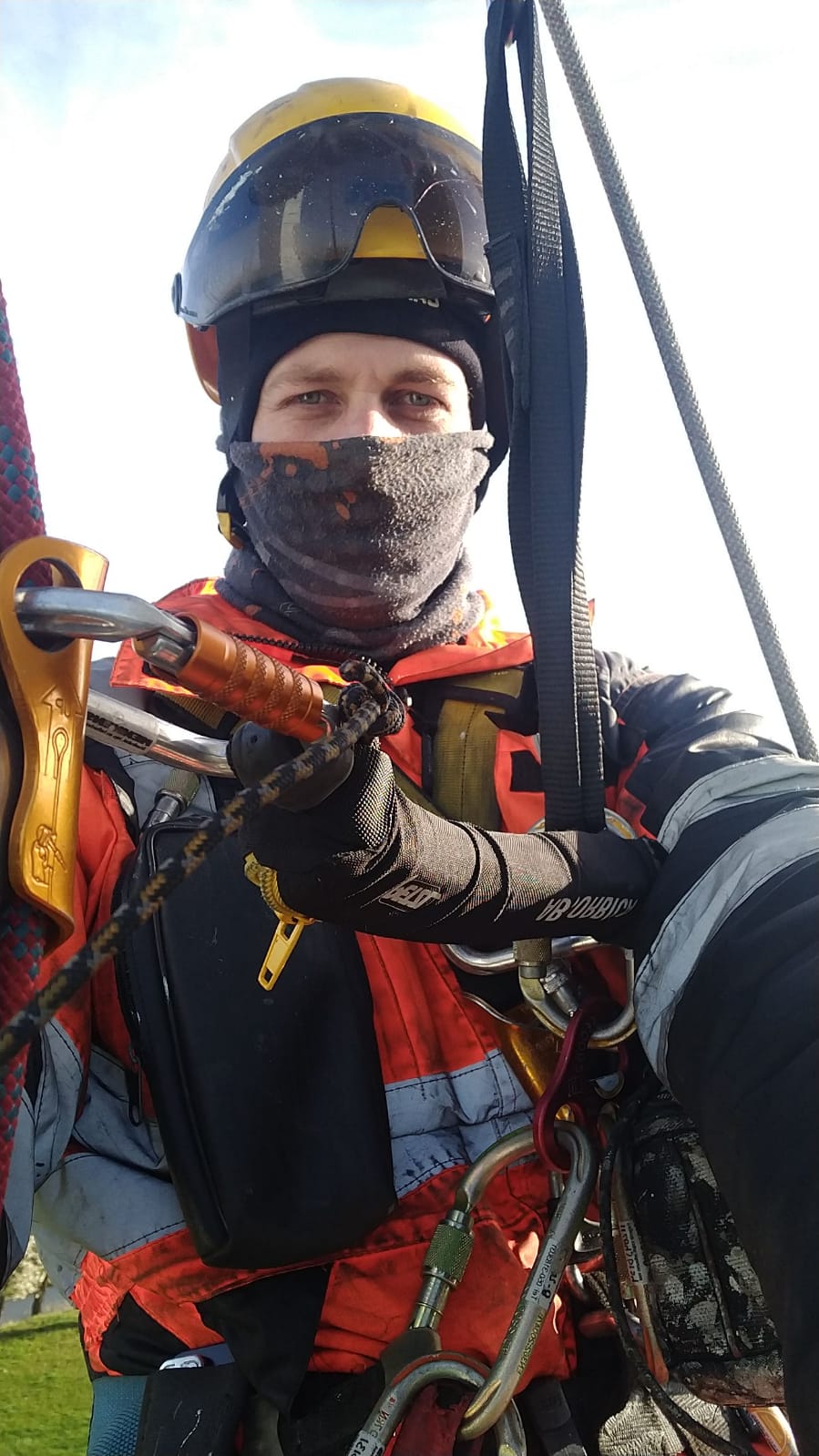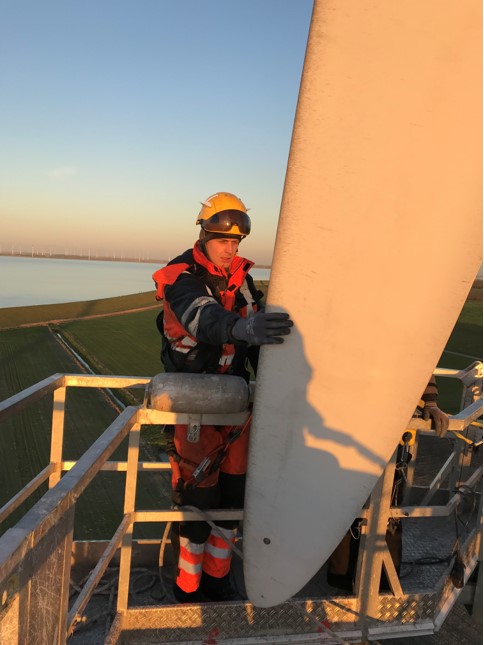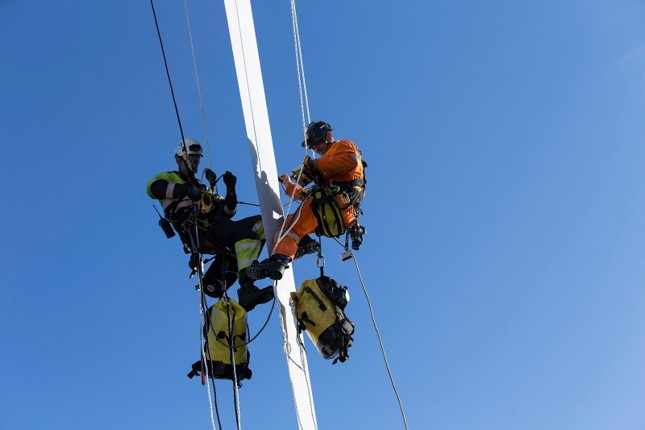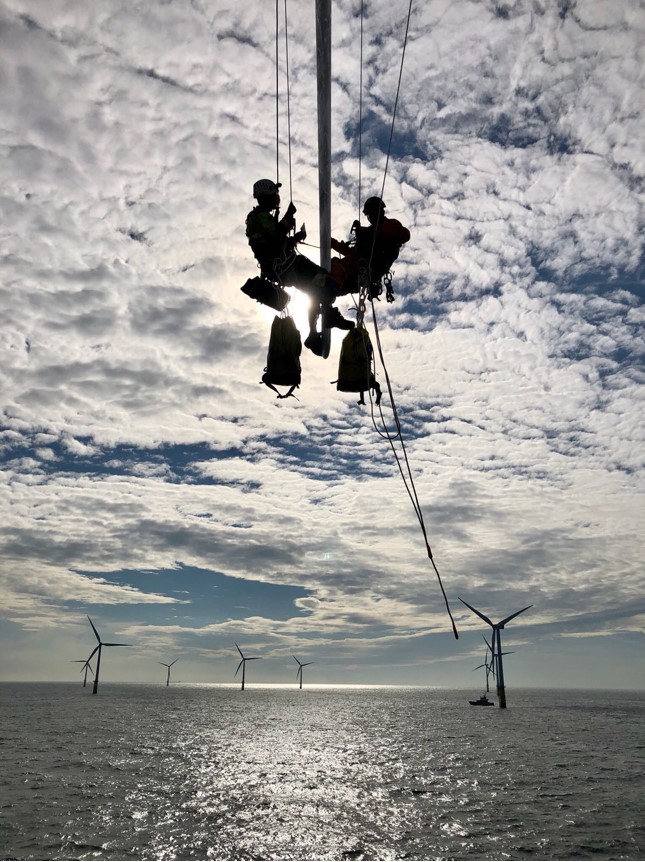Certain professions are still a bit out of the ordinary, or at least not the first thing you share with your friends. In this series of portraits I want to give a glimpse into the lives of people with a special profession. Because hey, secretly you are also curious about what the life of a nude model, weed grower or tree surgeon looks like. Today a portrait of Rienk Greidanus (23) and Volmer de Jong (27) who certainly do not have an everyday job: they are wind turbine mechanics.
50 to 80 meters high
You would just drive past them, but if you occasionally look up next to the highway you have a chance to spot them: wind turbine mechanics. That happened to me recently on the highway when I sat on the passenger seat for once instead of behind the wheel. And that gave me an idea: I want to speak to those people for my special professions portrait series. There are plenty of questions I could think of about this subject: ‘What does the inside of the wind turbine look like? What kind of work do you carry out? How do you get up there? Is there a lift or do you have to climb stairs? The answer to the last question differs per generation of wind turbines: the newer ones often have a lift, the older ones only have a staircase. Volmer and Rienk both have been working as wind turbine mechanics for several years. Volmer: “Since the collaboration with Eneco we have more and more modern turbines that have a lift. That is always nice to see.” When working on the wind turbine, the men can do this in three ways: from the inside up and then by means of a skyclimber to carry out the work, or from the inside up and then by means of ropes. They then descend to the right height. Or they can come up from the ground with a rope and motor and then carry out the work. Before they start they decide what way suits the type of turbine and activities best.
A good wind turbine mechanic needs to be fearless of heights. Working at 50 to 80 meters height is required. Suffering of seasickness is out of the question either: you may not think about it, but such high towers are affected by the wind so you move a bit up and down during work. You also have to be fit because you have to be physically able to save a colleague in case of emergency and you have to be able to pull yourself up by means of a scaffolding clamp (if the motor does not work in an emergency situation). Rienk: “We often choose, if possible, to work from top to bottom because then you can descend instead of climbing up.”
Wind energy is the future
The gentlemen believe in the sustainable future of wind energy. Rienk: “The technology is fast, though saving wind energy is still very difficult. You really have to invent a mega battery that can store so much energy and that’s expensive. But a lot of progress has been made in recent years and often the energy can even go directly to the network. For example, you see a lot of wind turbines at Schiphol Airport and along sections of the NS (Dutch railway company). They need so much energy that they can use the wind energy immediately. I have to admit; I do not like the wind turbines. I’m glad I don’t live near such a wind farm, but I can live with it because it’s the future.” Manager Peter de Jong adds: “They aren’t pretty but you need them, just like sockets in the wall.”
In the Netherlands we now have about 2300 wind turbines and they all need to be maintained. We are talking about the three-wheeled industrial wind turbines that are used purely for the generation of wind energy (electricity). In addition, there are still centuries-old windmills with four blades in the Netherlands. These old variants absorbed the wind energy through the blades as well but then used it, for example, to grind grain or transport water.
Dirty Jobs
How do you get the idea to become a wind turbine mechanic? I cannot imagine you already knew this was what you wanted to be as a kid? Rienk tells how he was inspired by Discovery Channel. “The ‘Ditry Jobs’ program showed the work of a wind turbine mechanic. Then I thought ‘yes, I can see this happening for me.’ I was already working in construction, so combined with my mechanical engineering degree, the transition was not that big. Of course there are things that you have to learn extra but my employer facilitated that part.” Volmer: “I first worked in tank construction and gradually found out that I also liked to work at high altitudes. Now at Multi Blade Service I can put that into practice as a wind turbine technician for, among others, Eneco.
As a wind turbine mechanic, you are involved in the maintenance of the wind turbines. Windmills are actually the old-fashioned versions of wind turbines. The two terms are often used interchangeably by laymen. The term ‘windmill’ no longer fully covered the operation of the latest models, hence the term wind turbine. In addition to regular maintenance, a wind turbine mechanic is also engaged in the repair of damage caused by, for example, lightning strikes. Or damage from the factory, air under the lamination of the blades, holes in the polyester that become larger and have to be filled due to air resistance, coating that loosens. The inspection is mostly done by hanging in the ropes. We take photos from the sky climber or on a rope because we have to report everything later.
Safety first
Volmer: “When we start working at the wind turbine, we wear a special harness that can be properly secured. Tools go in a bag that is connected to the harness. We also have a camera with us because all observations and work must be recorded and reported. In the harness there is a kind of chair that you can fold out so you can work a bit more relaxed. You sometimes spend hours up in the air, so a little comfort goes a long way. If we work inside the top of the wind turbine, the harness can go off. Outside the turbine we carry our safety harness at all times. Sometimes we work from the sky climber. It allows us to walk all around the wick to access everything. And of course we check and double check that the blades cannot suddenly turn back on.”
Rienk: “Our profession is safe. It’s a risky job, but we carry it out safely.” There are all kinds of procedures and safety checks. Nothing is done without thinking. “I want to come home every night after work. I always keep that in mind when I execute the checks,” Volmer adds. They always work with at least three people and check not only their own work but also each other’s; the so-called ‘buddy check’. Rienk: “We have a working line and a back-up line so that we are always well secured. In addition, we have been trained so extensively that we can even save a colleague if, for example, he can not come down on by himself after an accident. That gives a safe feeling.” The wind turbines do not only exist on land: you also have large wind farms at sea. Rienk: “When we work at sea, the safety regulations are even stricter. The first time at sea was extra tensive but the view makes it all worthwhile.”
It’s fantastic over here
“I think my work is fantastic. Yes, at birthday parties we are always asked to tell our stories. Our friends think it’s cool that we do this. And I can take beautiful pictures at work. I think I could fill an Instagram account,” Rienk says as he shows me the unique pictures of his work. I fully agree with that.
Volmer: “I never felt any fear. I just thought, ‘bring it on!’ I’ve been doing it for two years now, but I still find my work challenging. No wicks are the same and you always have to see what the wind turbine needs. I like hanging in the ropes. Our work always attracts attention. We often see people stepping off their bike to take a picture. Then we always try to wave if we can. We visit the most unique locations, for example in Rotterdam at the entrance to the port. The most beautiful freighters pass there. Working offshore is also fantastic. It does take you longer to get to the location. But the view, those boats, the rising sun, beautiful. Those are really moments that I enjoy,” Volmer says.
I’d like to give special thanks to of course Rienk and Volmer, but also Denise from Eneco who has been kind enough to put me in touch with them.
Becoming a wind turbine mechanic
Did you read this article and now think ‘I want to do what they do’? There is no specific training for wind turbine mechanics. It is important that you are technically savvy. A practical (mbo) mechanical engineering course has brought these gentlemen a long way. Then there are some specific certificates to be obtained before you can enter the turbine and the air. Think of a VCA certificate, a graduate diploma with IRATA knotting techniques, GWO Fire Awareness, GWO First Aid, GWO Manual Handling and GWO Working at Heights. You also learn a lot from your colleagues with experience. Google on ‘rope access job’ for this branch of industrial climbing. Rope access is more a method than a specific job, but if you think it is cool to climb and work at great heights, it is certainly a good starting point.

